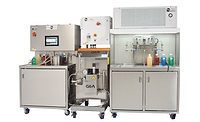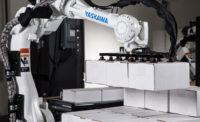Nearly all maintenance advice typically is aimed at one type of part or one specific procedure. Unfortunately, this results in many maintenance operations “not being able to see the forest through the trees.” Effective maintenance is more of a culture within the company than a process or cost center on the balance sheet. Everybody from the driver to the mechanic to the company owner needs to consider maintenance as an essential part of the job.
Rather than looking at downtime, it’s better to look at maintenance effectiveness in terms of equipment availability.
Calculating delays
Apart from scheduled maintenance, planned overhauls and physical damage repair, fleet managers should ask themselves: What percentage of time is each truck available for potential work? To keep things honest, let’s define “available” as being able to pass a full law-enforcement inspection, as well as being able to complete every mile scheduled before the truck is due back in the shop.
Although it’s aggravating, it’s also amusing in the airport when the gate agents announce that a flight is being delayed to perform maintenance. By definition, effective maintenance is what would have prevented that flight from being delayed, because the worn or defective parts would have been replaced before that plane was scheduled to carry passengers.
Although maintenance issues seem to be a common occurrence in the airline industry, a better comparison for availability would be the emergency-service fleets. Nobody wants to wait for a jump-start, light bulb replacement, or brake adjustment when they need an ambulance or fire truck at an immediate moment. Viewed from that perspective, maximum availability of your fleet begins to look considerably more important.
From the beginning
It’s important to remember that “big picture” maintenance is not unique to the mechanics. An effective maintenance program begins before that new truck is spec’ed or purchased. In spite of all of the advances made in truck engineering during the past decades, the industry still has a long way to go. Because the manufacturers will only offer what the customers will buy, truck purchase negotiations need to go far deeper than purchase price, horsepower and pounds.
Each and every minute a truck spends in the shop — even for scheduled maintenance — should be considered as a cost factor. Like the old oil-filter commercial said, “You can pay now or pay later,” when it comes to fleet maintenance. In this case, it’s better to pay now at purchase time, because then it’s just money. Paying later, when the truck is on the road, costs as much or more in dollars but also adds lost time and lost business to the equation.
For nearly 60 years, no consumer would even think of buying a car that required manual adjustment of the brake system. Yet in the commercial truck industry, self-adjusting brakes have only recently come into widespread use.
And what about lighting? A significant percentage of light bulbs on the road today are still of the tungsten-filament, incandescent design. Similar to brake systems, passenger vehicles are making widespread use of neon, LED and high-intensity-discharge (HID) lighting; however, LED lights still aren’t universal in the commercial truck market.
Once you’ve convinced the truck manufacturers that you’ll pay for efficiency, and you’ve spec’ed the truck to minimize the required maintenance, the financial end of the business must be considered as well.
Although some fleet operations might look at maintenance as a pay-as-you-go necessary evil, many savvy operators look at maintenance as an investment. Longevity, availability and the resale value of a truck are directly tied to the effectiveness of a maintenance program. Smaller fleets that operate without the benefit of multimillion-dollar cash flows should create a maintenance “escrow” account and put aside a certain percentage of gross revenue to provide funds for timely maintenance, eliminating the need to delay work until it can be “afforded.”
With our low-maintenance truck spec’ed and on the road and sufficient financial backing for the remaining maintenance, we can now move out of the office and into the shop, right? Well, almost.
By the book
How many fleets permit, encourage or even require a driver to take an unsafe truck out on the road? Although we’d like to think that it’s not a common practice, roadside inspection statistics suggest otherwise. Drivers do not like operating unsafe trucks; however, poor spec’ing, deferred maintenance and tight schedules could influence a driver to overlook unsafe conditions.
It’s not a coincidence that we haven’t moved out to the garage until near the end of our big picture maintenance analysis, because no amount of “treatment and surgery” can get around the effects of an “unhealthy” maintenance plan.
But because the mechanics are nearly your last line of defense, they are a key part of the process. Given that they have the training and the tools, how much more extensive are the mechanics’ inspections of your trucks than those performed by the drivers? Is the repair shop reactive, waiting for complaints from a driver to investigate the cause, or proactive, swarming over the truck with a thorough inspection like a race car pit crew as
soon as it enters the garage?
Does your maintenance history system consist of dates written on filters with a marker, or can a manager access a database that tells him or her that this particular truck has been jump-started six times in the past six weeks and might require electrical service?
How about paperwork in the shop? It should come as no surprise that somebody who chose to be a mechanic probably doesn’t look too fondly on clerical work. However, even with the advent of ruggedized touchscreen computer terminals, many shop work orders are still paper-based documents with little tiny boxes that must be filled in by the same hands that are expected to maintain a multi-ton truck.
Handwriting is quickly going the way of the dinosaur. If a process requires much handwritten information — or any handwriting at all by a non-clerical employee — it’s a process that will almost certainly be avoided whenever possible. If computerizing a maintenance operation ends up requiring more clerical work by the mechanics, it’s moving in the wrong direction.
Last, but certainly not least, we come to the driver. The employees driving the trucks are generally not mechanics (or clerks), nor should they be considered as such. However, they are the ultimate eyes and ears of your maintenance program. Does your maintenance system respect the driver’s input or consider it merely an annoyance?



